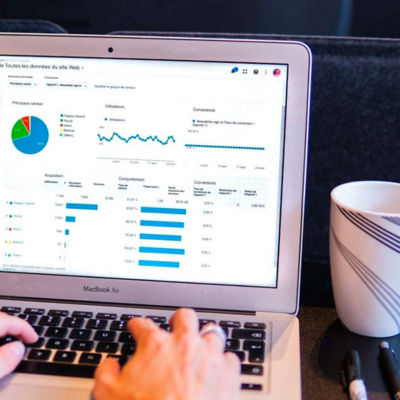Creativity is and has been the backbone of brand building and advertising. Creativity brings brands and products to life in a way that is resonant, memorable, and emotional. Creativity brings an idea to life and tells a story that gives these brands and products meaning and a place in the hearts of their buyers.
The most compelling creative storytelling is also emotional, engaging the buyers in a way that influences how they feel. In a study conducted by the IPA, advertising campaigns that receive creative awards are “more likely to employ emotional strategies than non-awarded campaigns.”1 The ideal creative approach conjures up an emotive response, a feeling that becomes associated with the brand or product. And it’s no surprise that the best creative is emotive, because we know from psychology that “feeling happens before thinking and is more strongly associated with motivation”.2 The creative campaigns that make people feel something through creative storytelling are those that can more readily motivate those same people to action.
And so, as we think about awarded creative work, about advertising that is emotional to us, without a doubt, the brands and products that come to mind are mostly, if not exclusively, consumer brands. It’s no surprise as these are the ads that so many of us are most regularly exposed to - but we also know that the focus on creativity and emotive storytelling was first adopted by brands that are bought by consumers. For so long, B2B has been considered the rational, logical, rule-following older sister to B2C advertising. Over the past few decades, B2B advertising has been focused on rationally delivered communication that features facts, specs, and cost assessment – void of inspiration or emotion. For those in B2B, tapping into emotional, creativity-driven storytelling has been something better left to their consumer-focused counter parts
In the past, we have thought of the B2B buyer and their path to purchase as a very rational process – much like the process of getting up and going to the office (at least, when we used to do such a thing!). We have thought of this process as being filled with tasks, checking things off, assessing, and progressing. We have believed that in the span of that morning commute, our B2B buyers assume a whole new identity, transforming from an ordinary consumer to becoming masters of productivity, experts in evaluation and the most human robots that the world has ever seen.
But we know that these people, these business and IT decision makers are people. Over the last few years, as commutes have been canceled and toddlers interrupt Zoom calls, we have witnessed that in fact, the people making B2B purchases and decisions are not robots, but have all the aspirations, emotions, and the same sense of empathy that our B2C buyers do. Because they are, in fact, one and the same.
This being said, we know that compared to purchases made in a consumer mindset, B2B buyers are purchasing a service, solution, or product on behalf of their organisation, their stakeholders, and their employees or teams. So, while our B2B buyers are also consumers and certainly are not robots, they are making decisions under a different set of influences, pressures, and criteria.
The context and influencing factors which impact a typical B2B buyer have long been thought to be the reason why creativity is just not as important in B2B, or feelings aren’t quite as impactful for a buyer like this. However, let’s take another look at those influencing factors and the role that emotion plays:
Influencing Factor 1:
B2B buyers are often making purchase decisions on behalf of their organisation, their stakeholders, and team to accomplish a business function, objective, or requirement.
Because of this, we have thought that B2B buyers have flipped a rational switch to be able to evaluate and deliver the best purchase decision for the group, separating themselves and their feelings from the decision. However, when buying for others, the decision maker feels both the pressure and the opportunity to please or satisfy those stakeholders or team member that they are buying for. Anyone who has ever bought a birthday gift can attest to this.
Influencing Factor 2:
B2B buyers often have a committee of stakeholders or co-sponsors – other people that they are collaborating with on the purchase – often as many as 6-10 people.3
Working with people and collaborating to drive consensus and a purchase decision is the epitome of emotional intelligence and manoeuvring. Convincing other stakeholders or partners of that right choice requires trust and understanding. If you’ve bought a car with a spouse or partner, you will know this emotional process of listening, compromising, and conversation – and tapping into what you know to be the values and feelings of your counterpart(s).
Influencing Factor 3:
B2B buyers are often making decisions that will impact their personal career.
For many B2B buyers, their decisions are seen as a reflection of their competency. Their reputation rides on these purchase decisions – and sometimes, so does a promotion. And unlike a purchase that these buyers may make at home, such as buying a skin cream or new shoes, when buying for their business, they have co-workers and stakeholders watching their decisions. They have spectators, determining and echoing their success or miss. One’s own success is most often the most precious and advantageous pursuit – the emotional desire to achieve success can in turn, influence how purchases and investments are made.
Influencing Factor 4:
For B2B buyers, the buying process and decision is a long one.
The scale and impact of many B2B purchases means that it takes time to move through the decision-making process and often times the process will take an inactive status for periods at a time. For that reason, creativity in B2B marketing and advertising is impactful because “long-term memories are formed through emotional response, so even if you’re not in the market for the product today, any emotional associations with the brand that are created by its advertising will stay with us, making the brand more salient to us in the future when we might be in the market for it.”4
Influencing Factor 5:
Many times, these are decisions that will impact the business for a longer timeframe than their own tenure with the organisation, for example, platforms and tools employees might use, or technology infrastructure, or capital expenses are all significant long-term commitments. To make a long-term commitment of this scale requires courage and confidence – emotions that very seldom come from a fact sheet or cost analysis. Those feelings come from knowing a brand or a company and buying into what they stand for, the feelings that they elicit, and their vision long-term. To make a commitment like this requires an emotional connection that is supported by the rational assessment – rather than the rational assessment alone.
These factors influencing B2B buyers showcase the importance of emotion in the buying process – the emotion that can only be reflected in creativity and storytelling. It’s the emotion that the buyer has in their gut – not just the thoughts in their brain. It demands creative storytelling that can be shared with stakeholders to turn them into believers. For B2B marketers, recognising that emotion in their buyers and answering with creativity is a way to meet your buyers where they are and resonate with them on a human level.
Focus is shifting in B2B advertising as B2B marketers are more focused on the impact of creative than their peers in consumer categories. In a recent study led by Merkle, 96% of B2B respondents said that creative is important to their customer experience strategy, in comparison to 94% of total respondents that included B2C marketers.5
And more recently, 67% of B2B respondents prioritised creative more that they had in 2021. This is echoed by performance marketers as they are increasingly leaning into creative as an opportunity and a through-line to tell a brand’s story across multiple touch-points.6
In the B2B sector, where many advertisers and marketers have focused on rational and sales-based messaging in their advertising and even brand building, we’re seeing that change. The sector is finding its balance – delivering both the rational facts and figures in a straightforward way that is so pivotal for big, sophisticated and large-scale B2B purchased investments – while also framing those facts and figures as a part of a much bigger idea, the creativity being the glue that holds together all of the disparate pieces of information and details – creating a mosaic that the buyer can not only picture, but can believe in, champion, and hold in their hearts.
-------------------------------------------------------------------------------------------------------------------------
Sources
- Binet, Les and Field, Peter. The Long and the Short of It: Balancing Short and Long-Term Marketing Strategies. Institute of Practitioners in Advertising, 2013.
- Zajonc, R.B. “Feeling and Thinking: Preferences Need No Inferences.” American Psychologist 35, no. 2 (1980): 151-75.
- Adamson, Brent and Toman, Nick. “5 Ways the future of B2B buying will rewrite the rules of effective selling.” Gartner. Accessed on January 23, 2023. https://www.gartner.com/en/sales/insights/b2b-buying-journey
- Wood, Orlando. Lemon.: How the advertising brain turned sour. Institutes of Practitioners in Advertising, 2019.
- “The Performance Media Report: Right-now marketing trends for Q3,” Merkle, July 2023.
- “The Performance Media Report: Right-now marketing trends for Q3,” Merkle, July 2023.








